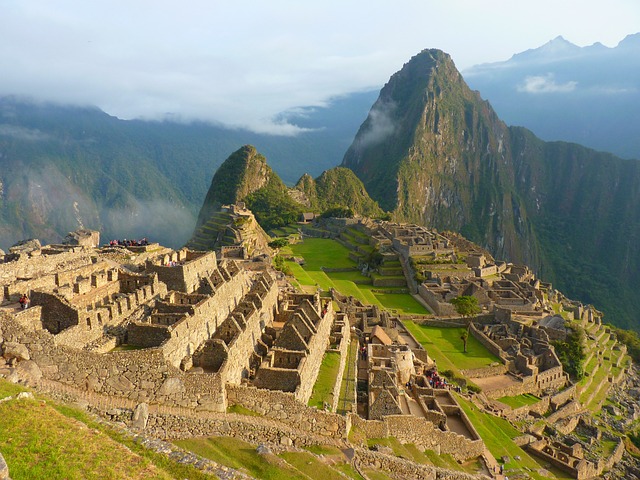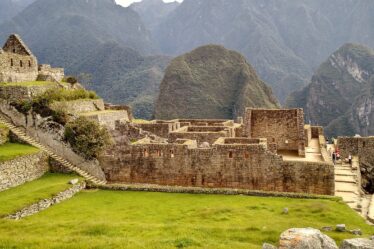
Machu Picchu, often referred to as the “Lost City of the Incas,” is one of the most iconic and breathtaking archaeological sites in the world. Nestled high in the Andes Mountains of Peru, this UNESCO World Heritage site draws millions of visitors each year who come to marvel at its ancient structures, stunning scenery, and enigmatic history. This detailed guide explores the rich history, cultural significance, and practical information for visiting Machu Picchu.
Historical Background
Discovery and Significance
Machu Picchu was brought to global attention by American historian Hiram Bingham in 1911, although it was known to locals long before that. The site, believed to have been constructed in the mid-15th century under the reign of Inca Emperor Pachacuti, is a masterpiece of Inca engineering and architecture. It is thought to have served as a royal estate, religious site, or astronomical observatory, though its exact purpose remains a mystery.
Architecture and Layout
The site is divided into urban and agricultural sectors, with a series of terraces that were used for farming. Notable structures include the Intihuatana Stone, the Temple of the Sun, and the Room of the Three Windows. The precise stonework and advanced engineering techniques used to build Machu Picchu are a testament to the sophistication of the Inca civilization.
Best Time to Visit
The best time to visit Machu Picchu depends on your preferences for weather and crowd sizes:
- Dry Season (May to September): This is the most popular time to visit, with clear skies and pleasant temperatures. However, it can be crowded.
- Wet Season (October to April): While there are fewer tourists, the trails can be muddy, and rain is more frequent. The Inca Trail is closed for maintenance in February.
How to Get There
By Train
Most visitors travel to Machu Picchu by train from Cusco or Ollantaytambo to Aguas Calientes (also known as Machu Picchu Pueblo), the town at the base of the mountain. From Aguas Calientes, a shuttle bus or a steep hike will take you to the entrance of Machu Picchu.
By Hiking
- Inca Trail: This classic trek takes about four days and three nights, leading hikers through stunning Andean scenery and past other Inca ruins.
- Salkantay Trek: A five-day trek that offers more remote and diverse landscapes, ending in Aguas Calientes.
- Lares Trek: A less crowded option that passes through traditional Andean villages and hot springs before reaching Machu Picchu.
Exploring Machu Picchu
Guided Tours
Hiring a guide is highly recommended to fully appreciate the historical and cultural significance of Machu Picchu. Guides provide insights into the Inca civilization, the purpose of various structures, and the site’s astronomical alignments.
Notable Structures
- Intihuatana Stone: An ancient sundial believed to have been used for astronomical observations.
- Temple of the Sun: A semi-circular temple with windows aligned to the solstices, demonstrating the Incas’ advanced understanding of astronomy.
- Room of the Three Windows: A structure with three trapezoidal windows that frame stunning views of the surrounding mountains.
Huayna Picchu and Machu Picchu Mountain
- Huayna Picchu: The iconic peak that looms over Machu Picchu. A steep, challenging hike rewards climbers with breathtaking views and a unique perspective of the ruins. Permits are required and limited.
- Machu Picchu Mountain: A less crowded and slightly less strenuous hike that offers panoramic views of the entire site and surrounding landscape. Permits are also required.
Practical Tips
Permits and Tickets
- Tickets: Entry to Machu Picchu is limited and requires advance booking. Tickets can be purchased through the official website or authorized travel agencies.
- Permits for Hikes: If you plan to hike the Inca Trail, Huayna Picchu, or Machu Picchu Mountain, you will need separate permits, which should be booked well in advance due to limited availability.
What to Bring
- Essentials: Comfortable hiking shoes, rain gear, sunscreen, insect repellent, and a reusable water bottle are must-haves.
- Pack Light: Only small backpacks are allowed inside Machu Picchu. Larger bags can be stored at the entrance.
Health and Safety
- Altitude: Machu Picchu is at an elevation of about 2,430 meters (7,970 feet). To avoid altitude sickness, acclimatize in Cusco or the Sacred Valley before visiting.
- Weather: The weather can change rapidly, so be prepared for both rain and sun. Layered clothing is recommended.
Nearby Attractions
Sacred Valley
- Pisac: Known for its impressive Inca ruins and vibrant market.
- Ollantaytambo: A well-preserved Inca town with stunning ruins and a lively market.
Cusco
- Sacsayhuaman: An impressive Inca fortress overlooking Cusco.
- Qorikancha: The Sun Temple, which was once the most important temple in the Inca Empire.
Aguas Calientes
- Hot Springs: Relax in the natural hot springs after a day of exploring Machu Picchu.
- Market: Browse the local market for souvenirs and handmade crafts.
Conclusion
Machu Picchu is more than just an archaeological wonder; it is a journey into the heart of the Inca civilization and the breathtaking beauty of the Andes. Whether you choose to explore the site on a guided tour, hike one of the many trails, or simply soak in the atmosphere, a visit to Machu Picchu is a once-in-a-lifetime experience that will leave you with unforgettable memories.

